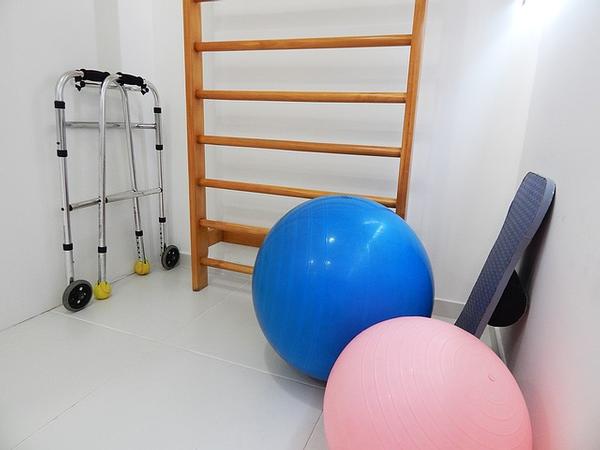Latest News and Information
Physical Therapist in Casper WY Explains How to Avoid Injuries While Gardening
Spring is right around the corner, which means it’s almost time to kick up some dirt and plant seeds and flowers in your yard. Many people turn to gardening to make their backyard a little more beautiful, while others enjoy it because of its proven ability to reduce stress and improve focus. Learn more about the physical and mental benefits of gardening. But, gardening can also lead to a lot of aches and pains if you’re not careful about your posture and positioning. According to a physical therapist in Casper WY, you can avoid gardening pain by following these tips:
Stretch before and after.
Even though gardening is not a strenuous exercise, it does involve putting your body in uncomfortable positions, so it’s recommended that you stretch before and after the activity. Do gentle back bends and leg stretches to loosen the muscles in your lower body and prepare yourself for gardening.
Change positions.
Be mindful of how long you stay in one position so your body doesn’t begin to cramp or get sore. Set a timer on your phone or make it a point to adjust your position after every 10-15 minutes. Even if it’s a slight adjustment, it will help you prevent muscle stiffness, which will lead to aches and pains long after you have finished gardening.
Buy gardening pads.
Kneeling in the dirt can cause a great deal of discomfort. To avoid feeling this pain days later, buy a pair of knee pads designed for people who garden. This will put a cushion between your knees and the dirt, so you can sit comfortably and enjoy gardening.
Use a wheelbarrow.
Don’t try to carry heavy tools or bags of soil or mulch on your own—instead, use a wheelbarrow. But, you must operate the wheelbarrow properly in order to avoid aches and pains. Always keep your back straight when pushing a wheelbarrow, and if you have to strain to get the wheelbarrow to move, it’s too heavy for you. Take something out and try it again instead of putting yourself at risk of an injury.
Don’t bend your wrist upwards.
You may think your back and your knees are the only body parts that can be injured during gardening, but that’s not the case. You also need to be careful about how you bend your wrists while gardening. You should never bend your wrists upwards when pulling weeds or using any of your gardening tools. Keep your wrists straight and in line with your forearm at all times, and if you do have to pull something, use your biceps and shoulders instead.
At North Platte Physical Therapy, we’re dedicated to helping clients prevent injuries and live a pain-free life. But if you do injure yourself, contact North Platte Physical Therapy to learn more about how we can help you recover. Our staff is praised throughout the Wyoming and Nebraska areas for our commitment to our clients. We can fulfill comprehensive physical therapy services, and would be happy to customize a treatment plan for your personal needs.
Read More...
Stretch before and after.
Even though gardening is not a strenuous exercise, it does involve putting your body in uncomfortable positions, so it’s recommended that you stretch before and after the activity. Do gentle back bends and leg stretches to loosen the muscles in your lower body and prepare yourself for gardening.
Change positions.
Be mindful of how long you stay in one position so your body doesn’t begin to cramp or get sore. Set a timer on your phone or make it a point to adjust your position after every 10-15 minutes. Even if it’s a slight adjustment, it will help you prevent muscle stiffness, which will lead to aches and pains long after you have finished gardening.
Buy gardening pads.
Kneeling in the dirt can cause a great deal of discomfort. To avoid feeling this pain days later, buy a pair of knee pads designed for people who garden. This will put a cushion between your knees and the dirt, so you can sit comfortably and enjoy gardening.
Use a wheelbarrow.
Don’t try to carry heavy tools or bags of soil or mulch on your own—instead, use a wheelbarrow. But, you must operate the wheelbarrow properly in order to avoid aches and pains. Always keep your back straight when pushing a wheelbarrow, and if you have to strain to get the wheelbarrow to move, it’s too heavy for you. Take something out and try it again instead of putting yourself at risk of an injury.
Don’t bend your wrist upwards.
You may think your back and your knees are the only body parts that can be injured during gardening, but that’s not the case. You also need to be careful about how you bend your wrists while gardening. You should never bend your wrists upwards when pulling weeds or using any of your gardening tools. Keep your wrists straight and in line with your forearm at all times, and if you do have to pull something, use your biceps and shoulders instead.
At North Platte Physical Therapy, we’re dedicated to helping clients prevent injuries and live a pain-free life. But if you do injure yourself, contact North Platte Physical Therapy to learn more about how we can help you recover. Our staff is praised throughout the Wyoming and Nebraska areas for our commitment to our clients. We can fulfill comprehensive physical therapy services, and would be happy to customize a treatment plan for your personal needs.
Why Physical Therapy in Casper WY is Important After Surgery
If you’ve ever suffered a serious injury that required surgery, you may have been told to attend physical therapy in Casper WY following the procedure. This is recommended to many people who have just had surgery to repair an injury, but why? Here are some of the reasons why physical therapy is so important after certain surgery:
Injury Prevention
No one wants to reinjure themselves after going through the stressful ordeal of having surgery to repair an injury. Luckily, physical therapy can teach you the skills you need to keep your body strong and avoid injuries in the future. For example, senior citizens who were injured in a fall could go to physical therapy to work on their balance and coordination. Patients with back or pelvic injuries can attend physical therapy to strengthen their core, which will help them protect their vulnerable areas and avoid injuries in the future. No matter what type of injury you have, a physical therapist can help you understand how to prevent pain and further damage. Learn about the real world benefits of strengthening your core.
Faster Recovery
If you’re worried about missing a lot of time from work or not being able to jump back into your active lifestyle following a surgery, make sure you attend physical therapy as recommended. It’s been proven that post-operative patients who attend physical therapy sessions will recover faster than those who do not. In fact, some healthcare professionals will get an early start with patients by beginning physical therapy while they’re still in the hospital room recovering!
Regain Mobility
Surgery on your knees or hips can put a damper on your everyday life. It may be difficult for you to engage in the activities you did prior to surgery. In fact, something as simple as bending down to pick up something off of the floor can be challenging for those who are recovering from these surgeries. However, physical therapy can help you regain mobility and quickly get your life back on track.
Minimize Scar Tissue
Scar tissue is part of the body’s healing process, and occurs when a tendon, muscle, or bone has been injured. Scar tissue can easily form after a surgery, but, when it does, it can limit the mobility and range of motion of that area of the body. Physical therapy can help postoperative patients learn stretching techniques that can minimize the formation of scar tissue so patients don’t suffer a loss of range of motion following a surgery. Post-operative massages can also be performed on patients during physical therapy to loosen the scar tissue and prevent complications.
At North Platte Physical Therapy, we’re dedicated to helping clients recover after a surgery. If you’re curious about physical therapy, contact North Platte Physical Therapy to learn more about how we can help you recover. Our staff is praised throughout the Wyoming and Nebraska areas for our commitment to our clients. We can fulfill comprehensive physical therapy services, and would be happy to customize a treatment plan for your personal needs.
Read More...
Injury Prevention
No one wants to reinjure themselves after going through the stressful ordeal of having surgery to repair an injury. Luckily, physical therapy can teach you the skills you need to keep your body strong and avoid injuries in the future. For example, senior citizens who were injured in a fall could go to physical therapy to work on their balance and coordination. Patients with back or pelvic injuries can attend physical therapy to strengthen their core, which will help them protect their vulnerable areas and avoid injuries in the future. No matter what type of injury you have, a physical therapist can help you understand how to prevent pain and further damage. Learn about the real world benefits of strengthening your core.
Faster Recovery
If you’re worried about missing a lot of time from work or not being able to jump back into your active lifestyle following a surgery, make sure you attend physical therapy as recommended. It’s been proven that post-operative patients who attend physical therapy sessions will recover faster than those who do not. In fact, some healthcare professionals will get an early start with patients by beginning physical therapy while they’re still in the hospital room recovering!
Regain Mobility
Surgery on your knees or hips can put a damper on your everyday life. It may be difficult for you to engage in the activities you did prior to surgery. In fact, something as simple as bending down to pick up something off of the floor can be challenging for those who are recovering from these surgeries. However, physical therapy can help you regain mobility and quickly get your life back on track.
Minimize Scar Tissue
Scar tissue is part of the body’s healing process, and occurs when a tendon, muscle, or bone has been injured. Scar tissue can easily form after a surgery, but, when it does, it can limit the mobility and range of motion of that area of the body. Physical therapy can help postoperative patients learn stretching techniques that can minimize the formation of scar tissue so patients don’t suffer a loss of range of motion following a surgery. Post-operative massages can also be performed on patients during physical therapy to loosen the scar tissue and prevent complications.
At North Platte Physical Therapy, we’re dedicated to helping clients recover after a surgery. If you’re curious about physical therapy, contact North Platte Physical Therapy to learn more about how we can help you recover. Our staff is praised throughout the Wyoming and Nebraska areas for our commitment to our clients. We can fulfill comprehensive physical therapy services, and would be happy to customize a treatment plan for your personal needs.
Tips For Perfecting Your Posture From a Physical Therapist in Cheyenne WY
January 18, 2017
Do you ever find yourself hunched over at a computer or steering wheel? Perfecting your posture is not just about making yourself look longer and leaner—it can also protect your body from harmful injuries, aches, and pains. Learn more about how posture affects health. How can you make sure you have the proper posture? Here are some tips from a physical therapist in Cheyenne WY:
At North Platte Physical Therapy, we’re dedicated to helping clients prevent injuries and live a pain-free life. But if you do injure yourself, contact North Platte Physical Therapy to learn more about how we can help you recover. Our staff is praised throughout the Wyoming and Nebraska areas for our commitment to our clients. We can fulfill comprehensive physical therapy services, and would be happy to customize a treatment plan for your personal needs.
Read More...
Standing Up
When standing up, keep a small bend in your knees instead of locking them and adjust your weight into the balls of your feet. Position your feet so they are about shoulder-width distance apart from each other, and allow your arms to fall freely on each side of your body. Now, focus on the spine. Make sure you have elongated your spine as much as possible so you are standing up tall. Pull your stomach inwards while also bringing your shoulders back. After your spine is in the proper place, check in with your head. A great way to tell whether your head is properly aligned is by looking at the earlobes, which should be aligned with your shoulders. If they’re not, make this adjustment now. This is the proper way to stand, but if you get uncomfortable in this position after standing for a long period of time, try to shift your weight from one foot to the other to give your body a little break.Sitting Down
Your feet should always be flat on the floor while sitting, and you should avoid crossing your legs. Keep your knees at the same level as your hips, and your ankles slightly in front of your knees. Don’t scoot back in your seat so the backs of your knees are pressed against the chair. Instead, leave a little bit of space between your body and the chair. Be mindful of your shoulders as you sit. It’s easy to tense up and raise your shoulders if you feel uncomfortable, but don’t let this happen.Laying Down
Many people know how to correct their posture when sitting or standing, but what about when laying down? When you go to sleep at night, make sure you always sleep with a pillow. If you know you have posture problems, it wouldn’t hurt to buy a pillow designed especially for people with bad posture. It’s best to either sleep on your side or your back, but never your stomach. If you do sleep on your side, keep a soft pillow between your legs, and if you roll to your back, move this pillow underneath your knees.At North Platte Physical Therapy, we’re dedicated to helping clients prevent injuries and live a pain-free life. But if you do injure yourself, contact North Platte Physical Therapy to learn more about how we can help you recover. Our staff is praised throughout the Wyoming and Nebraska areas for our commitment to our clients. We can fulfill comprehensive physical therapy services, and would be happy to customize a treatment plan for your personal needs.
How Physical Therapy in Cheyenne WY Can Treat Whiplash
January 11, 2017
Whiplash is one of the most common injuries sustained in a car accident. It occurs when the impact of the collision causes your head and neck to jerk suddenly back and forth. If this injury is not treated correctly, it can lead to lingering pain and discomfort. Fortunately, physical therapy in Cheyenne WY has proven to be effective in helping car accident victims who are suffering from whiplash. How is it treated? Here are some of the ways:
Contact North Platte Physical Therapy to learn more about how we can help you recover from whiplash after a car accident. Our staff is praised throughout the Wyoming and Nebraska areas for our commitment to our clients. We can fulfill comprehensive physical therapy services, and would be happy to customize a treatment plan for your personal needs.
Read More...
Deep Tissue Massages
Whiplash victims may begin to notice tension in the soft tissues located in the neck, shoulders, and upper back, which can cause a great deal of discomfort. To alleviate this pain, physical therapists will often perform deep tissue massages, which put pressure on the affected soft tissues and result in the release of built up tension. Learn about the 4 benefits of a deep tissue massage.Ultrasound
An ultrasound can also be performed on painful areas caused by whiplash. What does an ultrasound do? This treatment will send sound waves deep into the soft tissues, creating a small amount of heat that will promote blood flow and reduce swelling and inflammation. Even though heat is used in this treatment, you should not feel any pain or discomfort. Ultrasound treatment is typically used as soon as possible following the accident, as this is when swelling is at its peak.Gentle Exercises
Once your physical therapist thinks you are ready, you will begin incorporating gentle exercises into your treatment plan. These exercises aren’t designed to make you sweat or lose weight, but rather improve mobility and increase strength and flexibility. Your physical therapist will create a custom exercise plan based on your injuries, and then work through them with you, correcting your posture and giving you helpful pointers every step of the way. Over time, you will begin to notice a huge improvement in your condition thanks to these beneficial physical therapy exercises.Hot and Cold Treatments
Physical therapists will often use hot and cold therapy on whiplash victims as well. An ice pack can be applied to the affected area to reduce inflammation and treat pain. It is recommended that ice be used as soon as possible following the injury. On the other hand, heat is used to increase blood circulation to promote healing and prevent the tight, compressed muscles from having spasms. If your physical therapist performs hot and cold treatments on you, ask a lot of questions and pay close attention to how long each treatment is applied. Then, you can treat yourself with an ice pack and heating pad at home any time you are experiencing pain outside of the office.Contact North Platte Physical Therapy to learn more about how we can help you recover from whiplash after a car accident. Our staff is praised throughout the Wyoming and Nebraska areas for our commitment to our clients. We can fulfill comprehensive physical therapy services, and would be happy to customize a treatment plan for your personal needs.
Treating Pain With Ice vs. Heat, What’s The Difference?
January 4, 2017
Ouch! Do you feel a minor ache or pain somewhere in your body? Whether you twisted your ankle the wrong way or lifted a little bit too much at the gym, aches and pains can put a major damper on your day, so it’s important to learn the best way to treat them. Two of the best pain relievers, ice and heat, are often used to fight off pain and get back on your feet, but is one better than the other? A physical therapist in Cheyenne WY from North Platte Physical Therapy explains treating injuries with ice vs. heat:
You should also use ice if you’re worried a new injury will leave a nasty bruise on your skin, since it can help prevent discoloration as well. A good rule to follow is to always use ice immediately after an injury to limit the swelling and bruising that may develop. Learn more about using ice and cold packs.
You should also use heat if you start to feel deep muscle cramping or soreness from a workout. Heat can help alleviate the aches and pains associated with stiff joints as well, so a heating pad is a great way for people with arthritis to manage their symptoms on a daily basis.
In general, heat is much more effective when the issue stems from a deep tissue or muscle, whereas ice is more effective when the issue is on the surface or in the tissues right underneath the skin.
Contact North Platte Physical Therapy to learn more about treating aches and pains with ice or heat. Our staff is praised throughout the Wyoming, Colorado and Nebraska areas for our commitment to our clients. We can fulfill comprehensive physical therapy services, and would be happy to customize a treatment plan for your personal needs.
Read More...
When to Use Ice
If your injury is brand new, it’s best to treat it with ice right away. Ice will immediately reduce inflammation and swelling in tissue near the surface. Apply ice to the injured area for a few minutes and you can also get a little relief from pain. How? Ice constricts your blood vessels underneath the surface, which not only helps with inflammation, but also numbs the pain so you don’t have to suffer any longer.You should also use ice if you’re worried a new injury will leave a nasty bruise on your skin, since it can help prevent discoloration as well. A good rule to follow is to always use ice immediately after an injury to limit the swelling and bruising that may develop. Learn more about using ice and cold packs.
When to Use Heat
Did you have a long, stressful day at the office? You may start to feel tense in your neck, shoulders, or back, especially if you’ve been sitting at a desk all day. In this situation, which should you grab: an ice pack or heating pad? Definitely the heat. Applying heat to these areas can help loosen the muscles and relieve some of the tension you feel. In fact, heat is not only the best choice, it’s the only choice when it comes to tense muscles. Whereas ice constricts the blood vessels, heat increases the blood flow to the affected area, which can help relax tight muscles. Ice cannot be used to treat muscle tension—it actually makes the discomfort worse—so stick to your heating pad.You should also use heat if you start to feel deep muscle cramping or soreness from a workout. Heat can help alleviate the aches and pains associated with stiff joints as well, so a heating pad is a great way for people with arthritis to manage their symptoms on a daily basis.
In general, heat is much more effective when the issue stems from a deep tissue or muscle, whereas ice is more effective when the issue is on the surface or in the tissues right underneath the skin.
Contact North Platte Physical Therapy to learn more about treating aches and pains with ice or heat. Our staff is praised throughout the Wyoming, Colorado and Nebraska areas for our commitment to our clients. We can fulfill comprehensive physical therapy services, and would be happy to customize a treatment plan for your personal needs.




